Green Cracked Brittlegill / Summer / Autumn / Edible
Welcome to a world of vibrant culinary wonders as we celebrate the delightful flavors of the Green Cracked Brittlegill (Russula virescens).
Join us on a journey where gastronomy meets beauty. With its striking green cap and distinct cracks, the Green Cracked Brittlegill stands as a gem among edible mushrooms. Learn to identify its unique features, discover its preferred habitats, and delve into the culinary treasures it offers. From its firm texture to its mild, nutty taste, this mushroom holds the power to elevate your culinary creations to remarkable heights.
Whether you are an experienced forager or an enthusiastic home cook, let the Green Cracked Brittlegill inspire your culinary adventures and entice your taste buds with its marvelous flavors. Embrace the abundance of nature’s bounty as we celebrate the enchanting delights that lie within the Green Cracked Brittlegill. Get ready to embark on a flavor-filled journey as we explore the captivating culinary possibilities offered by this remarkable mushroom.
Scientific Name
Russula Virescens
Family
Russalaceae
Habitat
Found mainly in broad leaved woodland especially with Oak and Beech sometimes with Pine
Description
An uncommon member of the Russula family that is found in the late summer and autumn. It has a green cap that has cracks towards the edges and grey or tan spots on the top.
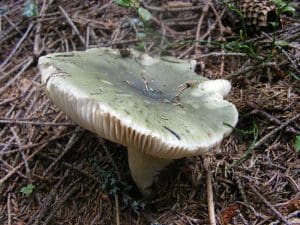
Identifying Features for Green Cracked Brittlegill:
Cap:
Green and tan cracked areas towards the edges, on top of a white/cream background. Convex then opening flat
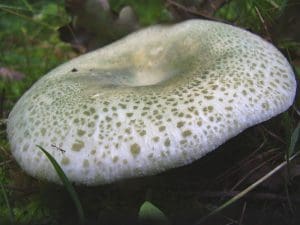
Stem:
white and snaps like stick of chalk
Gills:
Adnexed white/cream gills that are fairly crowded and brittle when handled. ![]()
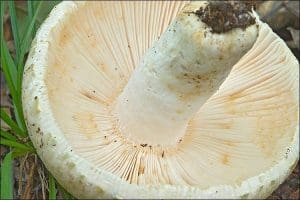
Smell:
Slight mushroomy smell.
Spores:
White to cream
Uses
good whilst fresh however better dried for infusing a rich mushroom flavour.
In food
Good tasting mushroom however the taste is improved by drying the mushroom. where it can then be used to create rich tasting stock for soups, ramens and stews.
Harvesting
found mainly with oak and beech from September through to November.
Known hazards
No other mushrooms look like this, even in the Russula family. however you should always apply the four step Russula test.
Potential lookalikes
It is difficult to confuse this mushroom with any other Russula however you should go through the four step Russula check:
-Snap – Does the stem snap like a piece of chalk?
-Flick – Do the gills break when you flick them gently?
-Peel – Does the skin on the cap peel away?
-Taste– this should only be done when you have gone through the other steps and are confident that you have a Russula. If a tiny amount placed on the tongue a chilli like burn or tingle means the mushroom is poisonous but a pleasant mushroomy taste means it is edible.



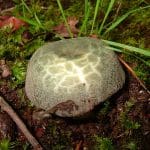
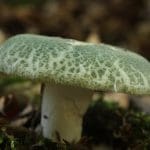
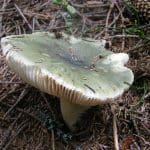
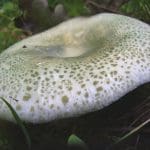
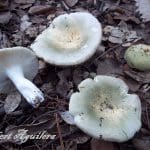
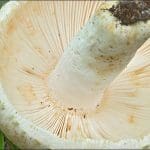



Leave a Reply
You must be logged in to post a comment.